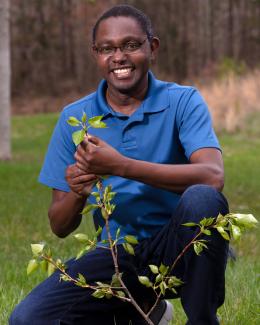Abstract
In the southeastern United States, the establishment of short-rotation intensively cultured plantations of hybrid poplar has been hindered by its susceptibility to stem cankers. We evaluated the tradeoffs between biomass yield and disease tolerance in hybrid poplar genotypes belonging to P. deltoides × P. maximowiczii (DM), P. deltoides × P. nigra (DN), P. trichocarpa × P. maximowiczii (TM), and P. deltoides × P. deltoides (DD) taxa. We hypothesized that canker resistant genotypes will have thicker bark but bark thickness and biomass yield will be negatively correlated. After two growing seasons, the DD genotypes developed thicker bark compared to the genotypes of other taxa and bark thickness was not correlated with biomass yield in the DD genotypes (R2 = 0.002). However, in the TM, DM, and DN genotypes, bark thickness was negatively correlated with biomass yield (R2 = 0.33–0.77). Disease incidence studies revealed that the DM genotypes were most susceptible to canker whereas no disease was detected in DD genotypes. Furthermore, bark analysis conducted by Fourier transform infrared spectroscopy coupled with multivariate analysis showed that that DD genotypes to be chemically separate from the three hybrid genotypes and that bark chemistry was correlated with canker disease incidence. Taken together, these results reveal that it is possible to generate hybrid poplar genotypes with thicker bark, disease resistance, and higher biomass yields. This insight should guide further efforts to develop genetically improved hybrid poplar genotypes, both in terms of biomass yield and disease tolerance, for cultivation in the southeastern United States. Hybrid poplar cultivation in southeastern United States is hindered by its susceptibility to stem cankers. We evaluated tradeoffs between yield and canker disease resistance in various hybrid poplar genotypes. After two growing seasons, the DD genotypes showed disease resistance and developed thicker bark that was chemically distinct from the other genotypes. Bark thickness was not correlated with yield in the DD genotypes but was negatively correlated with yield in the other genotypes. These results will guide the development of hybrid poplar genotypes that are both disease resistant and high yielding for cultivation in the southeastern United States.


